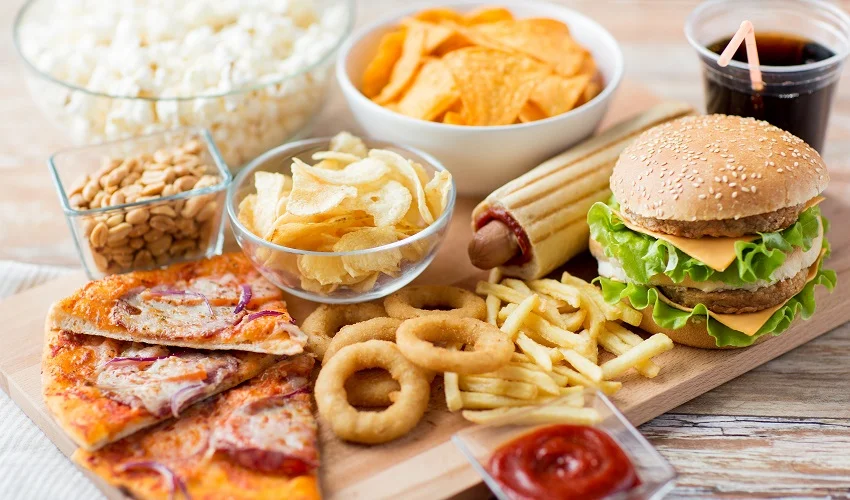Living with type 2 diabetes requires careful management of one’s diet and lifestyle choices. Among various dietary components, carbohydrates, proteins, and fats play significant roles in blood sugar control and overall well-being. This article explores the impact of carbohydrates on diabetes management, providing insightful guidance and practical examples to help individuals make informed choices and achieve a diabetes-friendly diet.
Understanding Carbohydrates
Carbohydrates are a key component of the diet and have a significant impact on blood sugar levels. By understanding the different types of carbohydrates and implementing portion control strategies, individuals can effectively manage their diabetes.
The significance of carbohydrates in diabetes
Understanding the role of carbohydrates is crucial for individuals with diabetes. Carbohydrates are the primary source of energy for the body, and they have a direct impact on normal blood sugar levels. When carbohydrates are consumed, they are broken down into glucose, which enters the bloodstream and can cause a rise in blood sugar levels. For individuals with diabetes, monitoring and managing carbohydrate intake is essential for maintaining stable blood sugar levels.
Not all carbohydrates are created equal, and it’s important to differentiate between simple carbohydrates and complex carbohydrates. Simple carbohydrates, found in sugary foods and beverages, are quickly digested and can cause rapid spikes in blood sugar levels. On the other hand, complex carbohydrates, such as whole grains, legumes, and non-starchy vegetables, are digested more slowly and have a gentler effect on blood sugar levels.
Controlling carbohydrate intake is often achieved through carbohydrate counting or the glycemic index. Carbohydrate counting involves monitoring the total grams of carbohydrates consumed in a meal or snack, allowing individuals to adjust their insulin dosage accordingly. The glycemic index ranks carbohydrates based on how quickly they raise blood sugar levels. Choosing low glycemic index foods can help minimize blood sugar spikes and provide more sustained energy levels.
Types of carbohydrates: simple and complex
Understanding the distinction between simple and complex carbohydrates is crucial for individuals managing type 2 diabetes. Simple carbohydrates, often referred to as refined or processed sugars, are found in foods like cookies, cakes, soda, and candy. These carbohydrates are rapidly broken down by the body, leading to a quick release of glucose into the bloodstream. As a result, blood sugar levels spike rapidly, posing challenges for diabetes management.
On the other hand, complex carbohydrates are composed of long chains of sugar molecules and are found in foods like whole grains, legumes, and vegetables. Due to their complex structure, these carbohydrates take longer to be broken down and digested by the body. Consequently, they cause a more gradual and controlled rise in blood sugar levels. The high fiber content in complex carbohydrates also contributes to improved blood sugar regulation, as fiber slows down the absorption of glucose into the bloodstream.
To effectively manage blood sugar levels, individuals with type 2 diabetes are encouraged to focus on incorporating more complex carbohydrates into their diets. This can be achieved by choosing whole grain options like brown rice, quinoa, and whole wheat bread instead of refined grains. Including a variety of colorful vegetables, such as leafy greens, broccoli, and peppers, is also important for obtaining essential nutrients and fiber while minimizing the impact on blood sugar levels.
In addition to choosing the right types of carbohydrates, portion control is essential. Balancing the amount of carbohydrates consumed with proteins, healthy fats, and non-starchy vegetables helps maintain a more stable blood sugar profile. This approach can be achieved by using the plate method, where half of the plate is filled with non-starchy vegetables, a quarter with lean protein, and a quarter with complex carbohydrates. Monitoring portion sizes and distributing macronutrients appropriately can contribute to better blood sugar control and overall health.
Glycemic index and glycemic load
Understanding the glycemic index (GI) and glycemic load (GL) of carbohydrates is important when it comes to managing blood sugar levels in individuals with type 2 diabetes. The GI measures how quickly a particular food raises blood sugar levels compared to a reference food, typically pure glucose. Foods with a low GI value (55 or less) are digested and absorbed more slowly, causing a slower and more gradual rise in blood sugar levels. On the other hand, foods with a high GI value (70 or higher) are digested and absorbed quickly, leading to a rapid spike in blood sugar levels.
However, solely relying on the GI value of a food may not provide a complete picture of its impact on blood sugar control. The glycemic load (GL) takes into account both the quality and quantity of carbohydrates in a specific serving of food. It provides a more accurate assessment of the actual impact on blood sugar levels. The GL is calculated by multiplying the GI of a food by the amount of available carbohydrates in a serving and dividing it by 100. Foods with a low GL (10 or less) have a minimal impact on blood sugar levels, while foods with a high GL (20 or more) can cause a significant increase.
To make it easier for individuals to navigate their food choices, here is a table illustrating examples of common foods and their GI categories:
| Food | GI Category |
|---|---|
| Apples | Low (GI < 55) |
| Brown rice | Medium (GI 56-69) |
| White bread | High (GI ≥ 70) |
| Sweet potatoes | Medium (GI 56-69) |
| Watermelon | High (GI ≥ 70) |
| Lentils | Low (GI < 55) |
| Chickpeas | Low (GI < 55) |
| Carrots | Low (GI < 55) |
| Greek yogurt (plain) | Low (GI < 55) |
| Milk (skim) | Low (GI < 55) |
By focusing on foods with a low GI and GL, individuals with type 2 diabetes can better manage their blood sugar levels. Incorporating a variety of fruits, vegetables, whole grains, lean proteins, and healthy fats into their diet can provide essential nutrients while promoting stable blood sugar control. It’s important to note that individual responses to carbohydrates may vary, and factors such as portion sizes, food combinations, and individual metabolic differences should also be considered when planning meals.
Carbohydrate counting and portion control
Carbohydrate counting is a valuable tool for individuals with type 2 diabetes to effectively manage their blood sugar levels. By tracking the grams of carbohydrates consumed in each meal or snack, individuals can maintain a consistent carbohydrate intake throughout the day. This approach helps in understanding how different foods affect blood sugar levels and allows for better meal planning.
When it comes to carbohydrate counting, it’s important to consider the total amount of carbohydrates in a food rather than just focusing on its source. Carbohydrates are found in various foods, including grains, fruits, vegetables, dairy products, and sweets. By reading nutrition labels and using resources such as carbohydrate counting apps or guides, individuals can accurately determine the carbohydrate content of the foods they consume, including foods like poha nutritional value per 100g.
Portion control is another essential aspect of managing carbohydrate intake. It helps prevent overconsumption, which can lead to spikes in blood sugar levels. Measuring portion sizes using tools like measuring cups, food scales, or visual cues can aid in maintaining the appropriate carbohydrate intake. It’s helpful to familiarize oneself with recommended serving sizes for different carbohydrate sources and adjust accordingly.
Additionally, individuals can prioritize consuming carbohydrates from whole, unprocessed sources, such as whole grains, fruits, and vegetables. These foods provide more fiber, vitamins, and minerals, which contribute to overall health and help manage blood sugar levels. Choosing high-fiber carbohydrates can also promote satiety, leading to better appetite control and potentially preventing overeating.
Balancing carbohydrate intake with other macronutrients like protein and fats is also important. Including lean sources of protein and healthy fats in meals and snacks can help slow down the digestion and absorption of carbohydrates, resulting in more stable blood sugar levels. For example, pairing carbohydrates with protein-rich foods like lean meats, fish, eggs, or legumes can provide a balanced and satisfying meal.
Working with a registered dietitian who specializes in diabetes management can provide personalized guidance on carbohydrate counting and portion control. They can help determine an appropriate carbohydrate goal for each individual based on their specific needs, lifestyle, and medications. They can also offer practical tips, meal planning strategies, and support to ensure long-term success.
By incorporating carbohydrate counting and practicing portion control, individuals with type 2 diabetes can take an active role in managing their blood sugar levels and promoting overall health. Consistency, education, and collaboration with healthcare professionals are key factors in successfully implementing these mindful strategies into daily life. With time and practice, individuals can develop a better understanding of their carbohydrate needs and make informed choices to maintain optimal blood sugar control.




